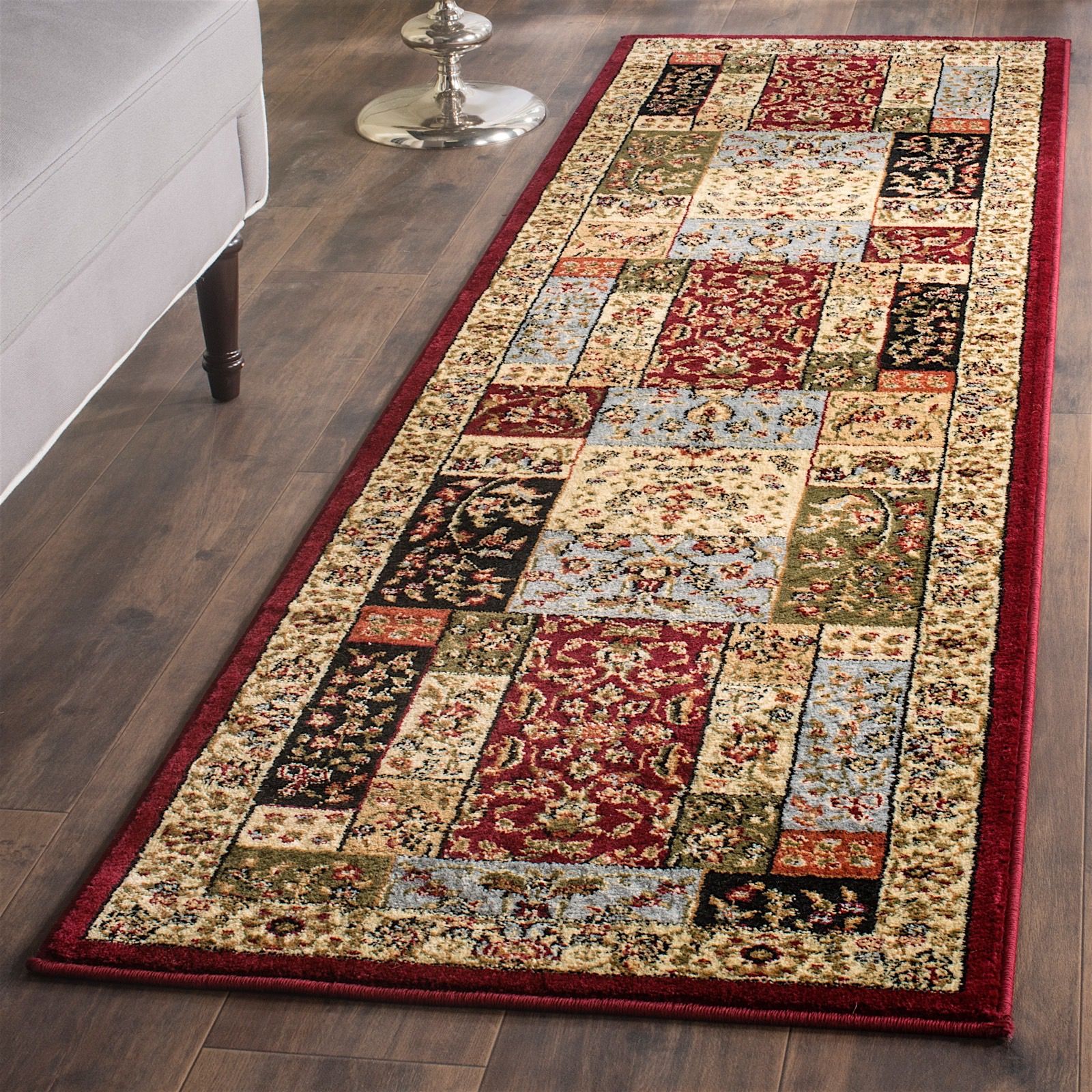Persian Rugs Collection
Within the basic weaving process, rug makers incorporate a lot of variety. With over 300 different styles of rugs, it makes sense to know the two basic categories of handmade rugs; tribal, and city, and the specific styles that they incorporate – nomadic, village, workshop, and master workshop. Nomadic rugs are produced by nomads and semi-nomadic tribes whose lifestyles have traditionally revolved around breeding sheep and weaving. Little has changed throughout the centuries, and the rugs made today by this group remain true to their ancestor’s rugweaving methods and designs. Rug making within this group is usually a female activity and is an expression of the artistic, cultural and religious heritage of the tribe.

In nomadic tribes, rugs are floor coverings as well as bags, seating, and other home furnishings. Today, these rugs are very popular due to their bold colors and the primitive designs that are now extremely fashionable. Favorite styles of nomadic rugs include the popular Gabbeh, Qashqai, Shiraz and Lori. The term ‘Village Rugs’ is applied to a broad category of rugs that share common features of construction, character and design. Village rugs fall somewhere between nomadic and workshop rugs. They can be very beautiful and intricate in design, but most possess the rougher or coarser weave associated with nomadic rugs. They tend to be sturdier and are usually made of good wool.
Village designs vary greatly and draw both from nomadic and workshop designs. The most popular designs are prayer-rug medallions and repeating geometric forms. Some popular styles of village rugs include Bakhtiari, Baluch, and Hamadan. Workshop rugs are just that, made in workshops, usually in a main city. They are distinguished from village and nomadic rugs by their finesse and appearance because of the way they are made. A weaver usually works from a design laid out on paper or under the direction of an overseer who systematically calls out, the color of each knot as it is required. This process takes away from the spontaneity of a random design, however more technically exacting designs can be achieved. Workshops employ both men and women and exceptionally talented weavers can earn great acclaim and financial rewards.
The rugs that have been produced in the last 30 years are among the finest ever made. In Iran and Turkey, each workshop group has developed its own style. Some of the best-known workshop rugs include Heriz, Kashan, Kerman, and Tabriz. Master Workshop rugs are the most esteemed, and typically, the most expensive of all Persian rugs. The term ‘Master Workshop’ is applied to workshops that consistently produce exceptional rugs under the direction of a master weaver.
Master workshop designs are very elaborate and sophisticated interpretations of classical themes. When evaluating a master workshop rug, look primarily for technical and aesthetic perfection. The knotting should be very fine and even throughout. Patterns and motifs should be symmetrical; exact in size and spacing with colors that are even and consistent in tone. Some of the styles that can be found at the master workshop level include Isfahan, Qum, and Nain.


